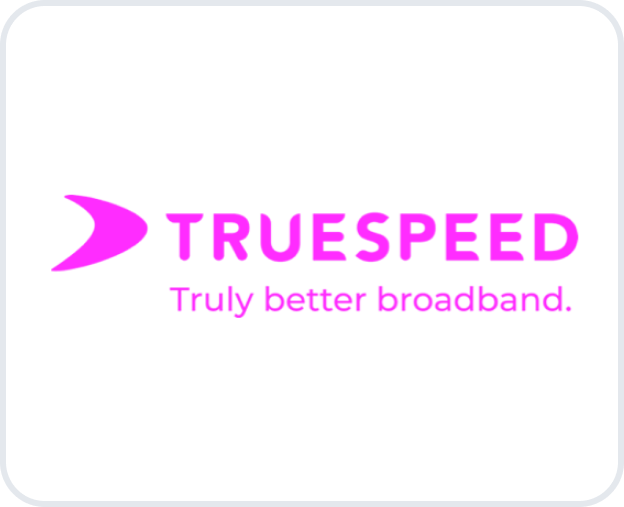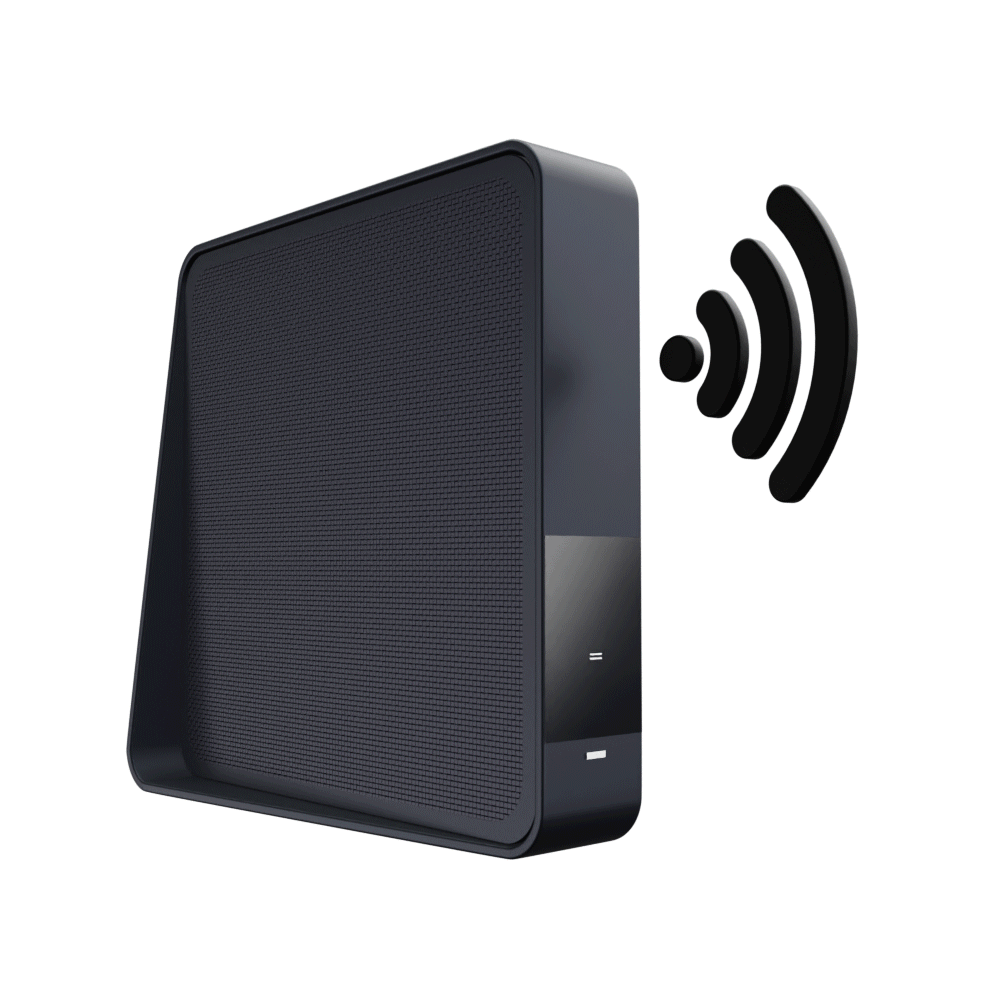You’re only seeing average speeds for your area Select your address and see the actual speeds you’d get in your home
What is Wireless Broadband?

Wireless broadband is also known as WiFi. It is a high-speed internet connection that does not use cable to connect you to the internet. Broadband providers offer wireless broadband via wireless routers to connect homes to the internet.
How does a Wireless Router work?
In simple terms, a wireless router takes the internet that comes into your home, turns it into radio waves and spreads your connection into any wireless-enabled device around your home or area. After this waves are picked up by wireless devices around your home which includes your laptop, mobile phones, and tablets without the need for cables trailing around, it is then converted into data which allows you to access different social media platforms. However, in some cases, some of your devices may find it difficult to access uninterrupted connections in some parts of your home, then you may need a WiFi extender or booster. This device will help you amplify your signal in every part of your home.
What are the Wireless Deals available?
Just like home broadband, wireless broadband also offers various broadband speeds and their reliability differs depending on which you decide to opt for. Therefore, when comparing wireless deals, keep the following in mind:
1. ADSL or Standard Broadband: This is the most basic type of broadband available and offers an average speed of 10 Mbps. A standard broadband operates over a copper wire via your phone line. It is the slowest broadband speed you can opt for.
2. “Superfast” Fibre broadband: This is also known as part fibre broadband. As the name suggests, “part fibre” makes use of the fibre-optic cable from your street cabinet to a pint and uses a copper wire phone line to complete the rest of the journey down to your home. It offers an average broadband speed of 30 Mbps, which is available to over 97% of UK homes.
3. Full-fibre broadband: This is also known as ultra-fast broadband speed or Fibre-to-the-cabinet (FTTP). It uses fibre cables all the way down to your home. It offers an average speed of 1,000Mbps (1Gbps) and is only available to 42% of homes.
4. Cable Broadband: This is a broadband service operated by Virgin Media. It uses coaxial and fibre optic cables to deliver connection to your home. It also offers an average speed of 1,000Mbps. However, it is not widely available in the UK.
Factors To Consider When Comparing Wireless Broadband Deals

It’s important to understand the key factors that can significantly impact your experience and satisfaction. Here are the primary considerations you should keep in mind when comparing different deals:
Speed
Wireless broadband speed is one of the most critical factors to consider. It determines how quickly you can download files, stream videos, and browse the internet on your mobile phone.
Different providers offer varying speeds, so it’s essential to assess your needs and choose a package that provides adequate speed for your usage habits.
If you’re a casual user who primarily checks emails and social media or a heavy streamer who consumes large amounts of data, selecting the right speed tier can ensure a smooth online experience.
Data Allowance
Another crucial aspect of wireless broadband deals is the data allowance offered by each provider. Data allowance refers to the amount of data you can use monthly before incurring additional charges or experiencing speed throttling.
For mobile phone users, especially those who frequently use data-intensive applications like video streaming or online gaming, opting for a package with a generous data allowance is essential.
However, if you’re a light data user who primarily uses Wi-Fi for browsing, you may be able to save money by choosing a plan with a lower data cap.
Coverage
Coverage is perhaps the most practical consideration when selecting a wireless broadband provider. While many providers boast about their extensive coverage, the reality can vary depending on your location.
Before committing to a deal, you must check the provider’s coverage map to ensure you’ll receive a reliable signal in your area.
Remember that coverage can differ significantly between urban and rural areas, so it’s important to verify coverage not only at your home but also in places you visit frequently, such as your workplace or favourite hangout spots.
Contract Length and Pricing
The length of the contract and the associated pricing structure can also influence your decision when comparing wireless broadband deals.
Some providers offer flexible month-to-month contracts, while others require a more extended commitment in exchange for lower monthly rates. Consider your budget and how long you’re willing to commit to a particular provider before making a decision.
Additionally, be sure to factor in any upfront costs, such as activation fees or equipment charges, when comparing the overall value of different deals.
Taking the time to compare various offerings ensures that you’ll enjoy a reliable and satisfactory internet experience.
What are the Pros and Cons of Wireless Broadband?
| Pros | Cons |
| It offers convenience and portability. With a wireless router, you get to access the internet wherever you are without the need to plug in cables whenever you need to connect. | Signal strength can dwindle. Your router signal strength depends on the size of your home or the position of your router. And this could make your signal poor in some areas and strong in others. |
| Wireless broadband allows for multiple individuals and multiple devices to connect to the internet at the same time. | A wireless router can be exposed to cyber-attacks from unauthorised users. However, with a secured password, your wireless router can be protected. |
| It is easy to set up. You do not need to worry about setting up or having to wait for an engineer’s visit to get started with your broadband. You just need to plug in and start using it. | The quality of your router. The quality of routers varies from one another. While some router maintains the fastest speed with more than one device, others are unable to. But your package could be a determinant of the type of router you are given. |
| Smart device compatibility. Wireless routers have the technology to connect to other devices apart from your phone. Other devices like fridges, speakers, and lights are all compatible to connect to your router. |
How Do I Set Up My Wireless Broadband?
Most wireless broadband are self-service so rest assured that you do not need an engineer or special service to get you started. Most routers come with pre-installed settings which makes it easy to set-up which is by just plugging it into a power socket or a cable socket. However, in some cases where you need to install some hardware, you may require an engineer to sort it out.
Where Is The Best Place To Put My Wireless Router?

Where you place your wireless router in your home, can determine your router signal in some areas of your home. The following will inform you of the positions in which to place your router to have the best signal around your home.
1. Position your router in the middle of your home: Placing it in the middle of your home reduces the walls your router has to go through. The fewer the walls the better the signal.
2. Do not place your router by the window: By placing your router by the window, there will be a leakage of signal outside which is meant to circulate in your home.
3. Don’t place it by the TV: Metal objects can reflect and scatter your signal. Also, make sure not to put it by the fridge or microwave either.
4. Place your router where it is visible: If you put it in a cupboard, the signal has to travel through more obstacles before it reaches your device. Therefore make sure there are no obstructions near your WiFi for it to deliver the best signal.
5. Avoid putting your router on the floor: There will be some signals going through the floor so you either put it on a table or on a shelf.
How do I connect to WiFi in my Home?
To connect to your home Wi-Fi, you will need a wireless network card to get the job done. As every device you wish to connect to your wireless broadband, you require a wireless network card. To connect your device to the internet, you need the Wi-Fi name and password information on your router label. Then in your device’s WiFi connection, find the name of the WiFi and type in the WiFi password to get connected.
This depends on the owner of the WiFi but you can change the WiFi name and password to a more personalised one.
What WiFi should I get?
The type of wireless broadband you should opt for totally depends on your budget and your internet needs. The most suitable broadband speed for every household is an average of 30Mbps. However, if you are a heavy internet user which could mainly consist of streaming HD videos, and online games, with multiple devices at a time then you may require a more faster broadband speed. At this point, you can consider opting for superfast broadband or ultrafast broadband speed to do more with your connection.
However, if you only use the internet for basic internet needs like sending mail, and online shopping then ADSL or an entry-level fibre broadband could do the job.
What if my Wi-Fi isn’t working?

Once you set up your wifi, you can immediately connect to the internet. However, in some cases, your wifi isn’t working or lagging than your usual broadband speed. Here are what to do to rectify the situation.
1. Check your device: Check your device to turn on your Wi-Fi access if it hasn’t been turned on. Also, check to connect to the right wifi signal, there can be some confusion especially if your wifi has multiple signals. Check to be sure your device isn’t the problem.
2. Reboot your router: If your device is cleared from being the problem, then it might be your router. Switch off your router, and unplug it from the power source. Hold on for some minutes before turning on then reboot your network all over.
3. Move your Router: If your router signal seems weak or unresponsive, you can try moving your router. You can move it to an open space in the centre of your home with no obstructions or electrical appliances that could interfere with your signal.
However, if you tried every tip and none of them seems to work for you, then you can reach out to your provider to let them know the issue you are facing.
Which provider offers the best Wi-Fi router?

When picking a Wi-Fi router, it’s advisable to look out for a provider that offers the best wifi.
Here are the routers that come with the most popular broadband providers’ packages:
1. Sky Hub and Sky Q Hub
2. BT Home Hub and Smart Hub
3. Virgin Media Hub 3.0
4. TalkTalk Wi-Fi Hub and Super Router
5. EE Smart Hub and Bright Boxes
There are some slight differences between each provider’s Wi-Fi hub, but perhaps the biggest difference is between old routers and new ones. If you’re on an old contract with your provider, upgrading to a new router (or getting one for free when you switch to a new provider) could improve your Wi-Fi strength and the broadband speeds in your home.
Learn more about mobile broadband options.
What is Wireless Broadband?
Compare Broadband deals with Docalla
Can I get a wireless fibre broadband
All home fibre broadband deals are wireless, so most people can get this type of package. However, around 3% of homes in the UK still can’t access fibre broadband, mostly in hard-to-reach rural spots.
If you’re one of these households, look for alternatives that offer a similar speed to wireless fibre, including 4G or 5G mobile broadband and satellite internet.
What should I look for when buying wireless router
Look for routers that use AX (WiFi 6) technology as these will give you the fastest WiFi speeds. The best routers will also offer at least two radio bands, and the more antennae it has the better as this will give you the biggest signal range throughout your home.
If you want to manage how your WiFi network is being used, make sure your router has parental controls, quality of service options and a guest network feature.
What are the advantages of using wireless broadband for mobile phones?
Wireless broadband offers several benefits for mobile phone users, including flexibility, mobility, and convenience.
With wireless broadband, users can access the internet on their mobile devices from virtually anywhere with coverage, enabling them to stay connected on the go.
Additionally, wireless broadband eliminates the need for physical cables, allowing for easier setup and greater flexibility in device placement.
How do I determine the speed I need when choosing a wireless broadband deal?
The speed you need depends on your usage habits and the activities you plan to do online. For basic tasks like web browsing and email, lower speeds may suffice, while activities like HD video streaming or online gaming require faster connections.
Consider factors such as the number of devices connected simultaneously and the types of applications you use to determine the appropriate speed tier for your needs.
What is data allowance, and why is it important?
Data allowance refers to the amount of data you can use each month before facing additional charges or experiencing speed throttling. It’s essential to choose a wireless broadband deal with a data allowance that aligns with your usage habits.
Heavy data users should opt for plans with larger allowances to avoid running out of data prematurely, while light data users may be able to save money by selecting plans with smaller allowances.
How can I check the coverage in my area before choosing a wireless broadband provider?
Most wireless broadband providers offer coverage maps on their websites, allowing you to check the availability and strength of their signal in your area. Additionally, you can ask friends or neighbours who use the same provider about their experiences with coverage.
Keep in mind that coverage can vary depending on factors such as location and terrain, so it’s essential to verify coverage not only at your home but also in places you frequent.
Sky Broadband
£45.90/month
Unlimited minutes
12 months of 500 GB data
12 months
Contract length
£30.9 upfront cost
250 mbps Total Cost
Unlimited Text
Sky Broadband
£45.90/month
Unlimited minutes
12 months of 500 GB data
12 months
Contract length
£30.9 upfront cost
250 mbps Total Cost
Unlimited Text
Sky Broadband
Offer ends 30th Jan. 2023
£45.90/month
Unlimited minutes
12 months of 500 GB data
12 months
Contract length
£30.9 upfront cost
250 mbps Total Cost
Unlimited Text
Sky Broadband
Offer ends 30th Jan. 2023
£45.90/month
Unlimited minutes
12 months of 500 GB data
12 months
Contract length
£30.9 upfront cost
250 mbps Total Cost
Unlimited Text
Sky Broadband
£45.90/month
Unlimited minutes
12 months of 500 GB data
12 months
Contract length
£30.9 upfront cost
250 mbps Total Cost
Unlimited Text
Sky Broadband
£45.90/month
Unlimited minutes
12 months of 500 GB data
12 months
Contract length
£30.9 upfront cost
250 mbps Total Cost
Unlimited Text
Sky Broadband
Offer ends 30th Jan. 2023
£45.90/month
Unlimited minutes
12 months of 500 GB data
12 months
Contract length
£30.9 upfront cost
250 mbps Total Cost
Unlimited Text
Sky Broadband
Offer ends 30th Jan. 2023
£45.90/month
Unlimited minutes
12 months of 500 GB data
12 months
Contract length
£30.9 upfront cost
250 mbps Total Cost
Unlimited Text

























